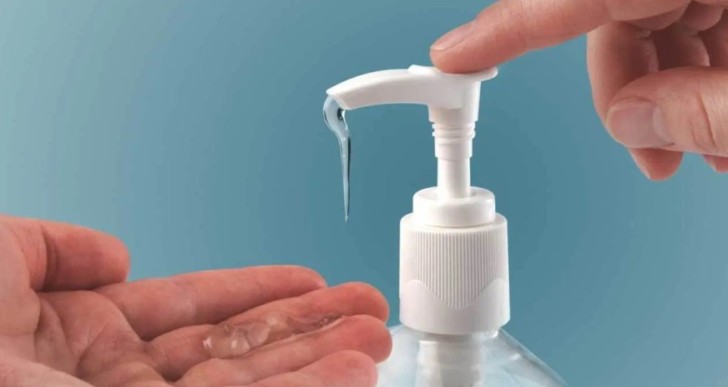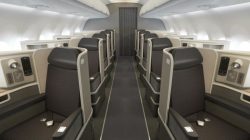One of the fastest ways to transmit diseases is to fly hundreds of strangers over thousands of miles traveling near the speed of sound. About two billion people travel by air every year. How clean is the aircraft that you are flying? What are the standards for airliner cleaning?

The Turnaround
When an aircraft parks at the gate and until it pushes back from the gate is the turnaround time. During the turnaround, the airline must deplane the arriving passengers, clean the cabin and board the departing passengers. Aircraft only make money while they are in the air. Domestic airlines try to keep the turnaround time to around 40 minutes. This doesn’t leave much time for cabin cleaning.
During the turnaround, cabin cleaners will pick up the trash and do a cursory cleaning of the restrooms. International carriers have a longer turnaround time, usually, at least 90 minutes and therefore the can and must do a higher level of cleaning for these longer duration flights. For exterior cleaning and repairs, Aerospace Cranes and other equipment may be required.
Cleaning Schedules
Domestic airlines usually sit for a few hours after midnight and there is time to do a basic cabin cleaning that includes:
- Cleaning the toilets,
- Wiping down and disinfecting of tray tables,
- Galley cleaning,
- Overhead bin cleaning and
- Seat cleaning.
This more thorough cleaning can take one to two hours depending on the size of the aircraft.
Most airlines have a deep cleaning schedule every four to six weeks. This cleaning will take many hours and is extremely thorough.
Cleaning products and disinfectants are approved for use in airliners by the aircraft manufacturer. The use of disinfectants is effective on complex viruses like SARS, avian flu, MRSA and E. coli. These disinfectants usually will be effective for up to 10 days.
What Are The Standards For Airliner Cleaning?
The simple answer is none. There are no federal agencies that set any kind of standard for airliner cleaning. There are also no federal agencies that oversee the cleanliness of aircraft cabins.
The World Health Organization (WHO) does have a guide for aircraft interior cleaning. You can read it here. The guidelines are just that, WHO has no enforcement oversight regarding airliner cleaning.
Who Is Cleaning Your Aircraft?
Decades ago, everybody that was connected with an airline was an employee of the airline. Those days are long gone. One of the best places for airlines to reduce costs is to use contract labor. Most of the people outside the aircraft that service the airplane and inside cabin cleaning are performed by contractors. Contract employees get paid less for doing the same work. There is also a high turnover rate of employment with aircraft service companies.
Who is supervising the cabin cleaners? Basically no one. Cabin cleaning during the turnaround time is sandwiched between deplaning and boarding passengers. There is no inspector with a “white glove” following the cabin cleaners supervising their work.
The “Hot Zone” And “Hot Spots”
The first thing that I want to talk about is the hot zone. This is the proximity to a sick passenger. These are the two rows in front and two rows immediately behind you. If a passenger is sneezing or coughing in the hot zone, you are close enough to catch something.
The hot spots actually cover many surfaces that you come in contact with:
- Tray tables,
- Armrests,
- Window shades,
- Reading light switches,
- Flight attendant call button and
- The “gasper” (air) vents.
Any surface that you share with your fellow passengers can be a hot spot. The king of the hot spots is the aircraft lavatory. There should be a sign on the lavatory door that says – “Danger, Enter At Your Own Risk”.
Keep Your Shoes On
I am amazed by how many passengers are either in socks or bare feet. Then these people take a visit to the lavatory. Here is a news flash, the liquid on the floor of the restroom is not water. These same people put their feet on bulkheads or the seatback in front of them. If you are one of these people, stop doing this immediately.
Final Thoughts
Shelly and I are flying from Seattle to Phoenix today. She was at the store yesterday and couldn’t find one bottle of hand sanitizer on the shelf. Plan ahead, and purchase sanitizer and sanitizer sheets ahead of time as they seem to be a real popular item.
Cleanliness and transmission of diseases aren’t confined to the aircraft that you are flying. You should treat the airport terminal in the same manner as the plane you are flying.
Wash your hands often and thoroughly. Try not to touch your face especially your nose and eyes as they act as perfect entrances to your body.
Story Update
I wrote an updated story on how Alaska Airlines is enhancing cabin cleaning to combat coronavirus. You can read that story here.




